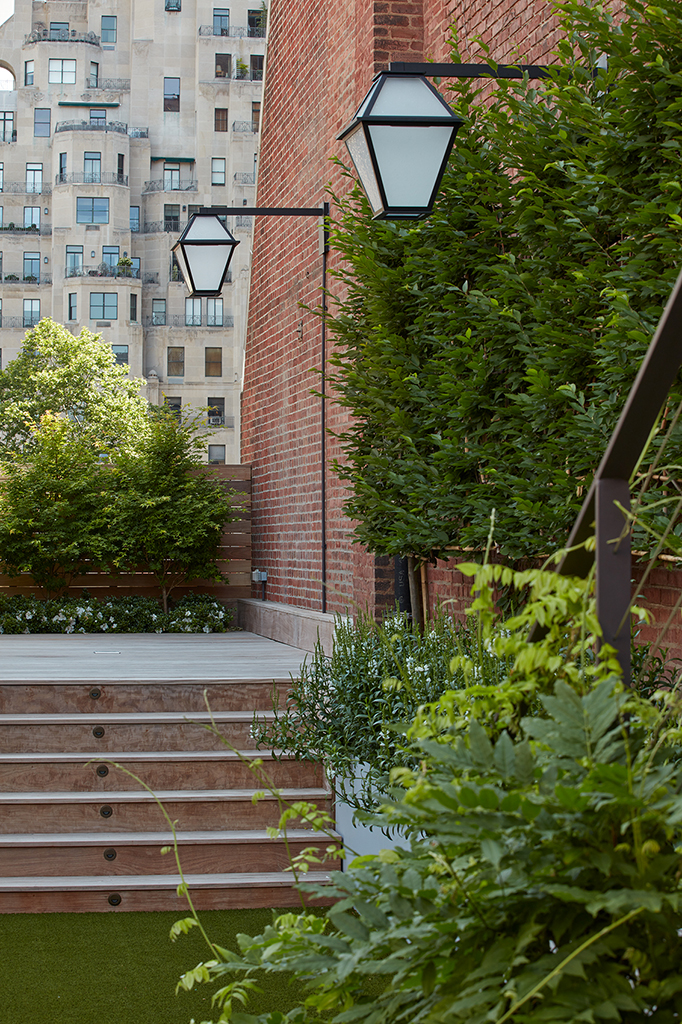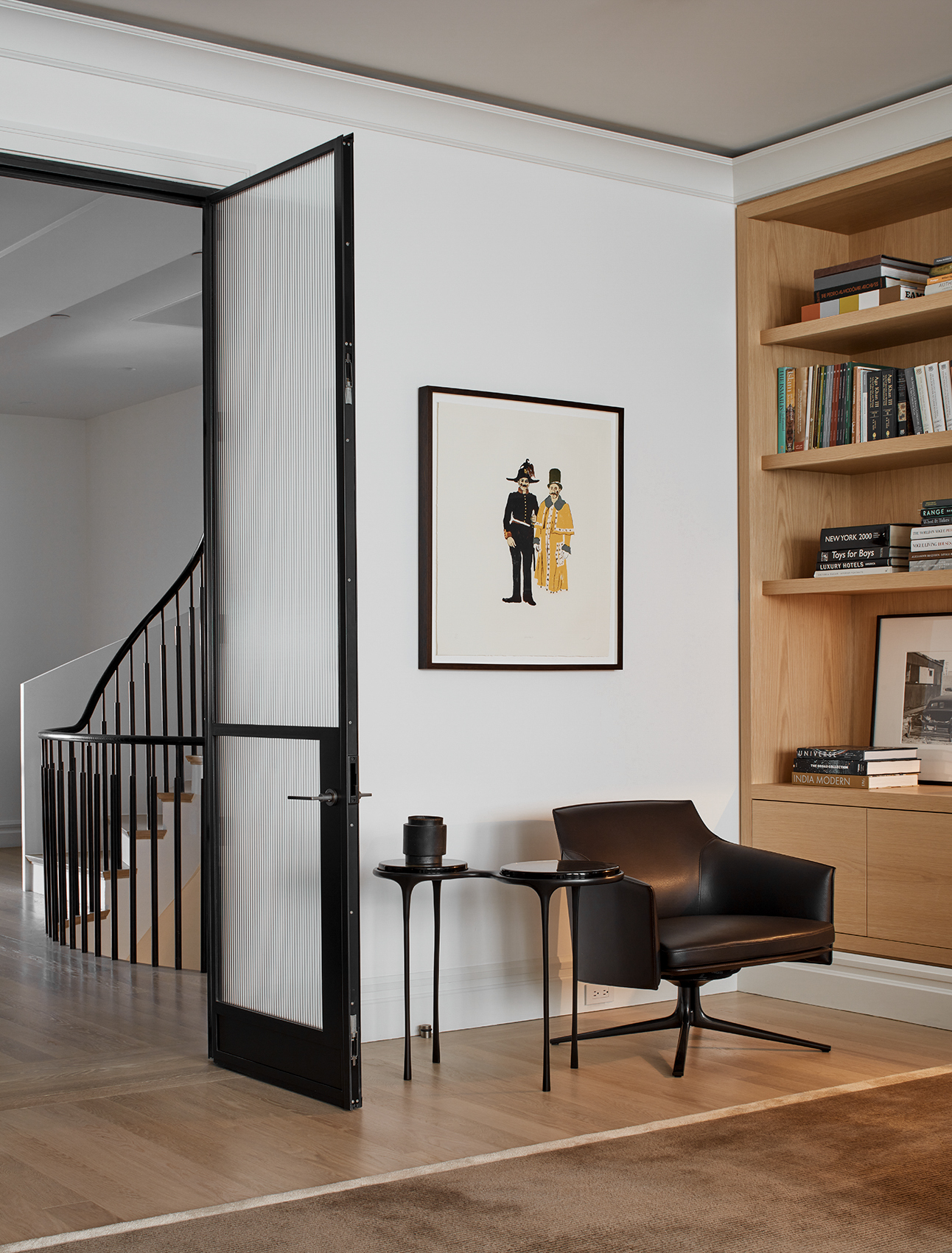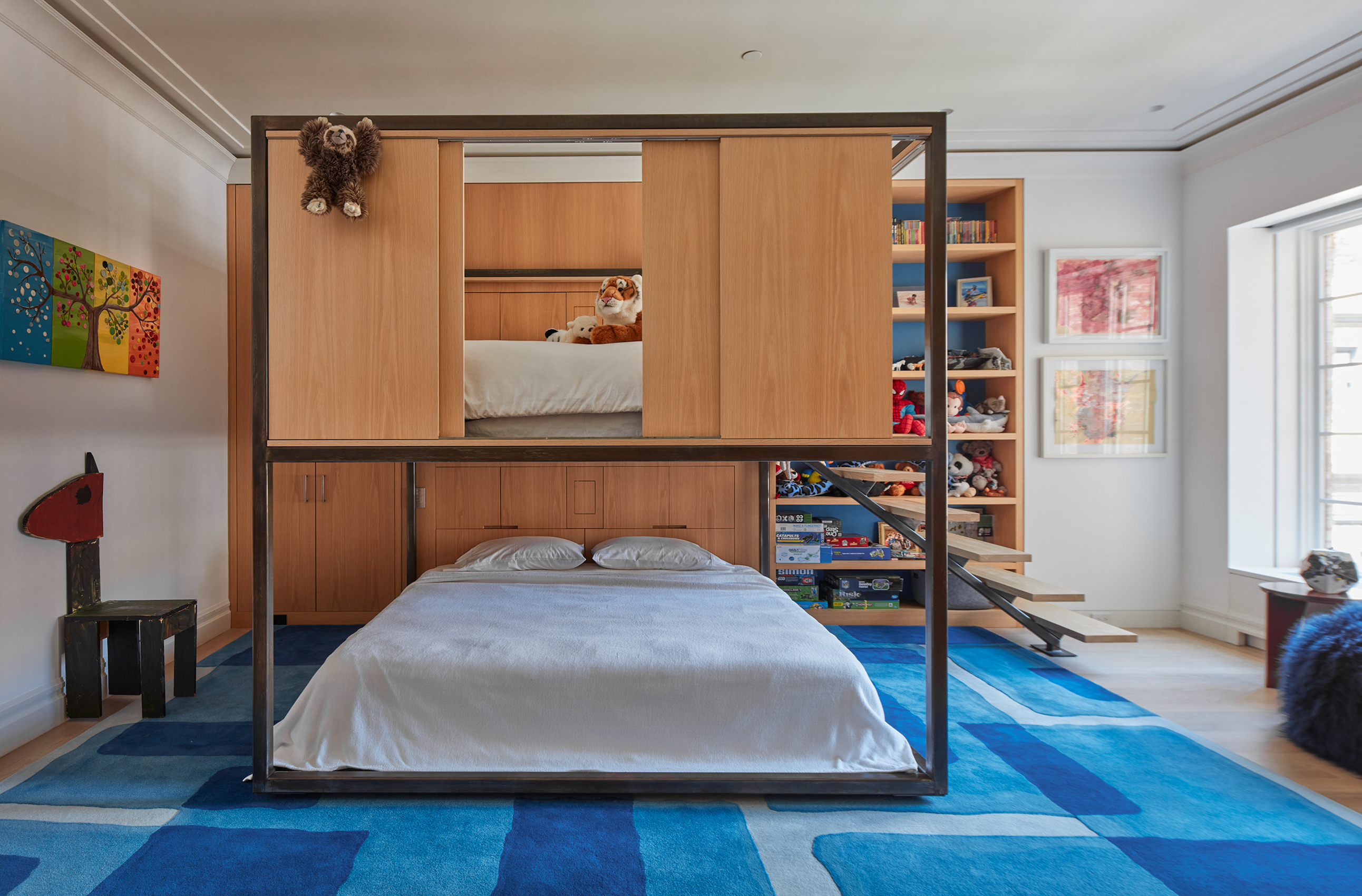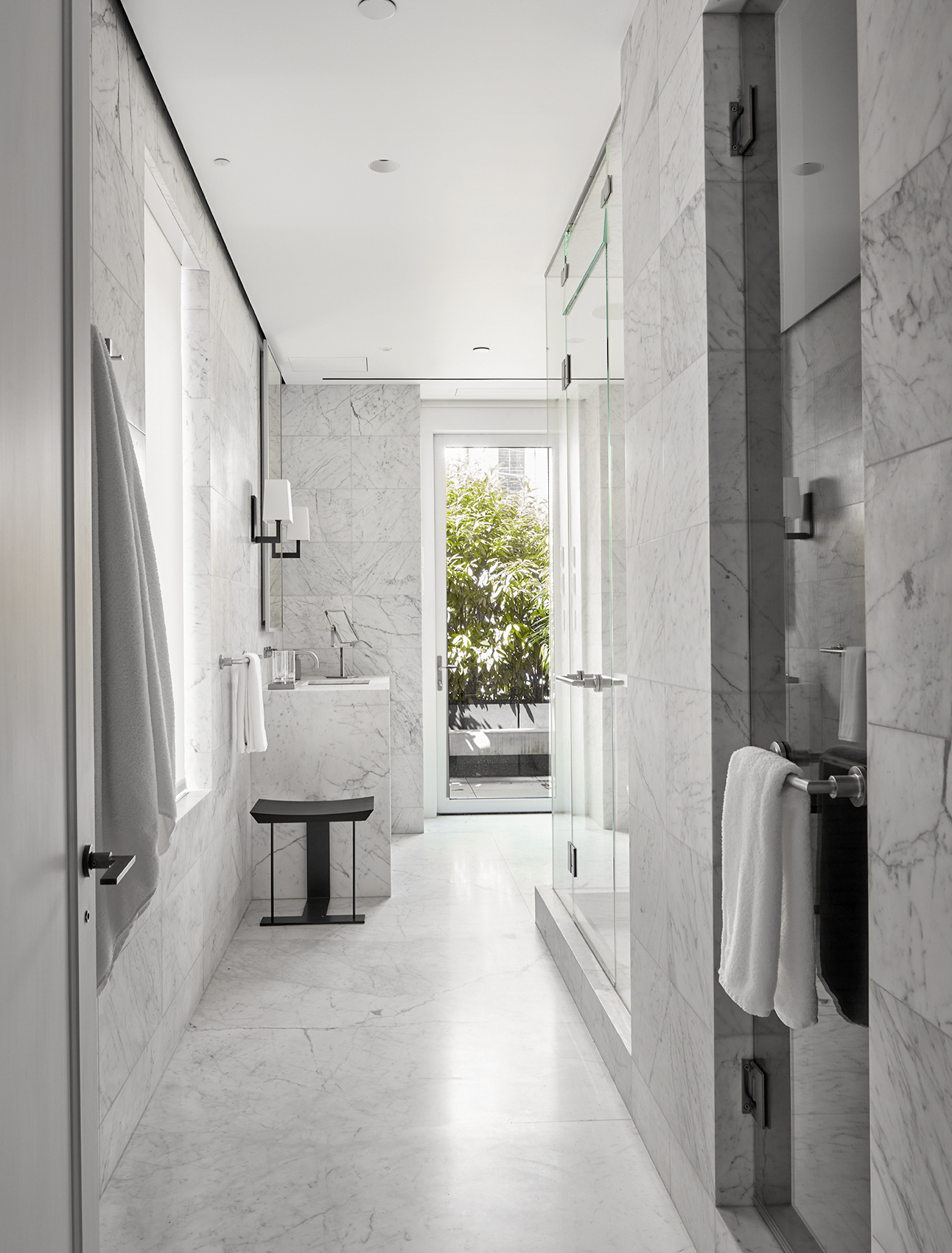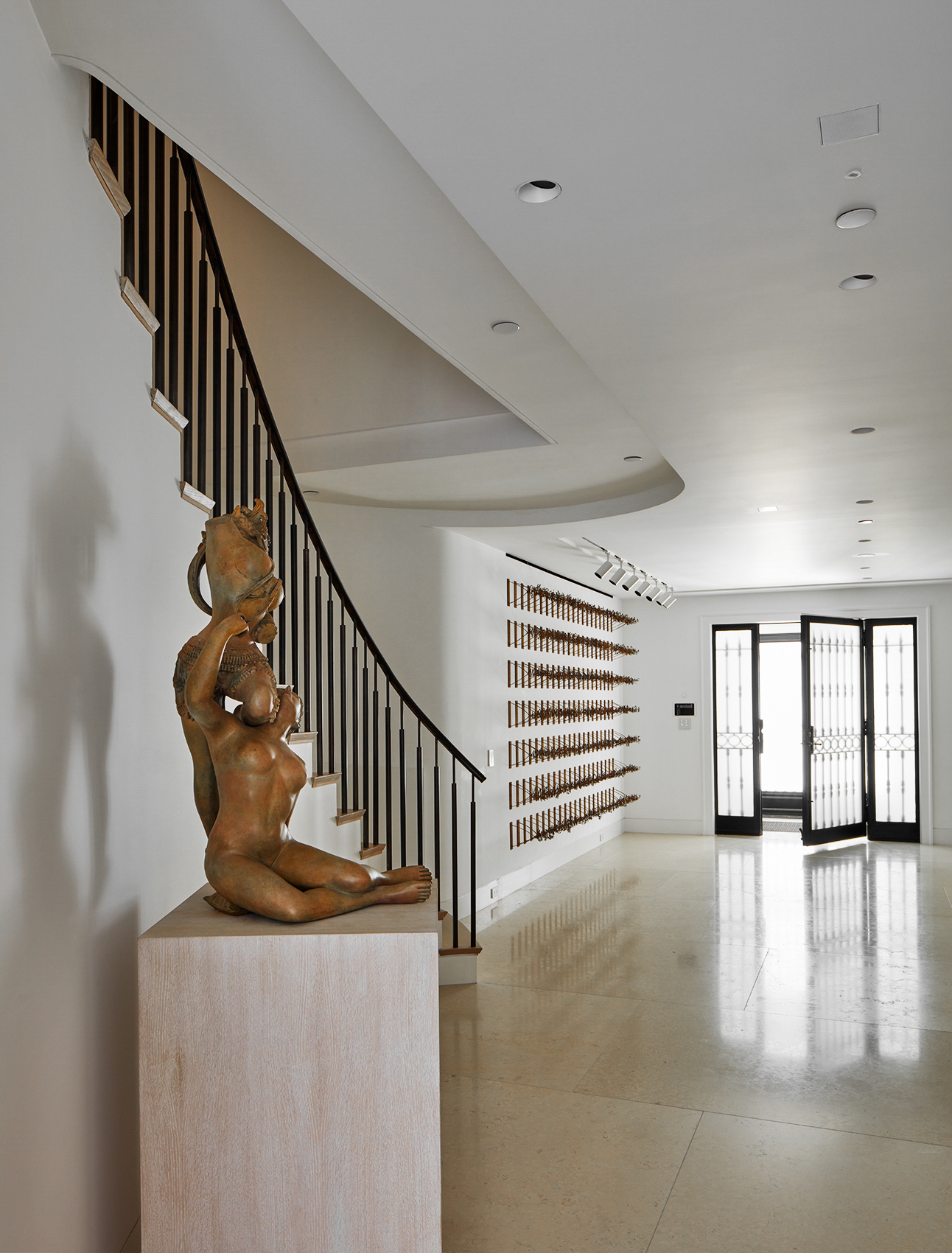Originally commissioned in 1885 by developer William Openhym and designed by architect Charles Buek in the Queen Anne style, the townhouse façade was reimagined in 1919 in a French Neoclassical idiom by architect S. Edison Gage. Converted into apartments in 1954 and acquired by a single family in 2017, the residence sits on the Upper East Side just blocks from Central Park and the Museum Mile, among some of Manhattan’s most storied Gilded-Age homes.
CU–A meticulously restored the townhouse’s façade over a four-year campaign, preserving its rhythmic window bays, traditional awnings, and historic cornice line. The street presence was reinvigorated through custom bronze-and-rippled-glass sconces with integrated theatrical uplighting, and the bronze entry doors were replicated to preserve their original ornament and spirit.
The 9,900 square foot interior unfolds over four levels, including an entry hall, stair hall, living and dining rooms, a gourmet kitchen, three bedrooms, five full baths, three half baths, a study, two dressing rooms, two media rooms, and a multi-level rooftop terrace. CU–A approached the project with a vision of ‘serene theatricality,’ designing the townhouse as both a luminous gallery and a warm home. A sculptural, skylit central stair, sited along the side wall, functions as both circulatory spine and focal artwork, animating the four-level sequence of public and private rooms. Custom steel kitchen doors with fluted glass panels admit north light into the stair hall while reflecting the white-limestone slab floor. The wood burning fireplace in the entry hall, clad in book-matched white marble, anchors the sequence of rooms with warmth.
Interiors were developed in collaboration with Rottet Studio, whose restrained palette of white oak, honed limestone, and bespoke bronze details emphasize daylight and serenity while providing a seamless backdrop for the owner’s art collection. Careful interventions honor the building’s layered history by lighting formerly dark volumes, concealing all mechanical and audio visual systems within precise detailing, and reworking surfaces to coexist with traces of earlier fabric.
For the homeowners’ 8 year old son, CU–A designed a custom two-level bunk bed that functions as a house within his room, addressing his desire for a permanent hideout. Sliding wooden panels on the upper level allow for multiple configurations, enabling varying levels of privacy or connection with the rest of the room. Panels extending from the upper bunk to the lower bunk create complete separation on the lower level, while the upper level panels leave the ‘roof’ open to form a fortress-like balcony and sheltered vantage point overlooking the room. This feature exemplifies CU–A’s approach of combining functionality, playfulness, and thoughtful design.




